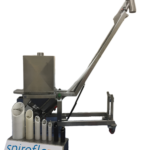The concept of virtualisation was a breakthrough in computer technology when it was developed 40 years ago to enable shared use of computing resources, increasing efficiency. Virtualisation was first adopted by IT as part of select technology applications. But today, with the advent of Edge Computing and because of a variety of real-world benefits, it has now moved into complex plant control systems and other automation scenarios to enable digital transformation. Let’s get to the bottom of why virtualisation should be a core strategy for Edge Computing right now.
Virtualisation allows the capabilities of a physical machine to be distributed across multiple environments and takes several forms, including desktop, server, or operating system virtualisation.
- Virtualisation can be used with desktops to create one environment that is simulated and shared with multiple physical machines at the same time.
- Server virtualisation allows a server to be partitioned so that multiple functions can be run simultaneously.
- Virtualisation can also be used with operating systems so that one physical machine can run multiple operating systems side by side.
Whichever type of virtualisation you choose, the benefits of virtualisation at the edge are the same:
- Reduced Engineering Hours and Greatly Improved Productivity
Instead of performing a single task multiple times on multiple physical machines, the task is only performed once. Depending on the task, engineering hours can be decreased by up to 75%
- Improved Speed of Time to Market
Virtualisation provides a single pane of glass view, allowing companies to quickly access information and make changes to respond to customer needs.
- Multiple Revenue Streams for your Organisation – Especially System Integrators
Virtualisation allows servers to be fully optimised. By partitioning the server, multiple clients running different programs can all use the same server, which allows for multiple sources of revenue.
- Stronger Competitive Advantage
Moving from physical machines to virtual machines provides a competitive advantage. Virtualisation protects data analytics and systems in a simple and secure environment which is easy to deploy and helps reduce the number of PCs and software licenses needed while also allowing for protected data by offering high availability and software fault tolerance.
- Reduced Ongoing Support Burden
In the same way that reducing repetitive tasks saves time, fewer physical machines reduces the time IT staff spends on troubleshooting hardware problems, managing upgrades and patches, and performing backups.
In a recent trend report, industry analyst firm Gartner stated that “Edge Computing will become a dominant factor across virtually all industries and use cases” naming it one of the top 10 strategic technology trends for 2020, and another firm, IDC, identified edge computing as one of the top 10 key drivers for IT over the next five years. Virtualisation is an essential component of Edge Computing, allowing admins to quickly and easily manage workloads, shifting between servers. Virtualisation plays a critical role in many edge scenarios, including gateways or micro data centers that process data produced by sensors at the edge, or apps running in containers that are hosted on virtual machines.








